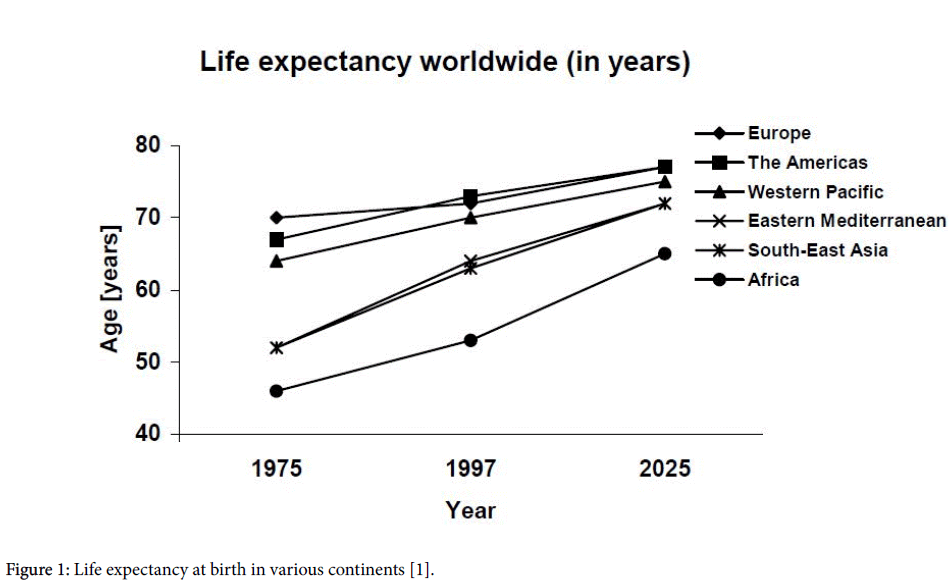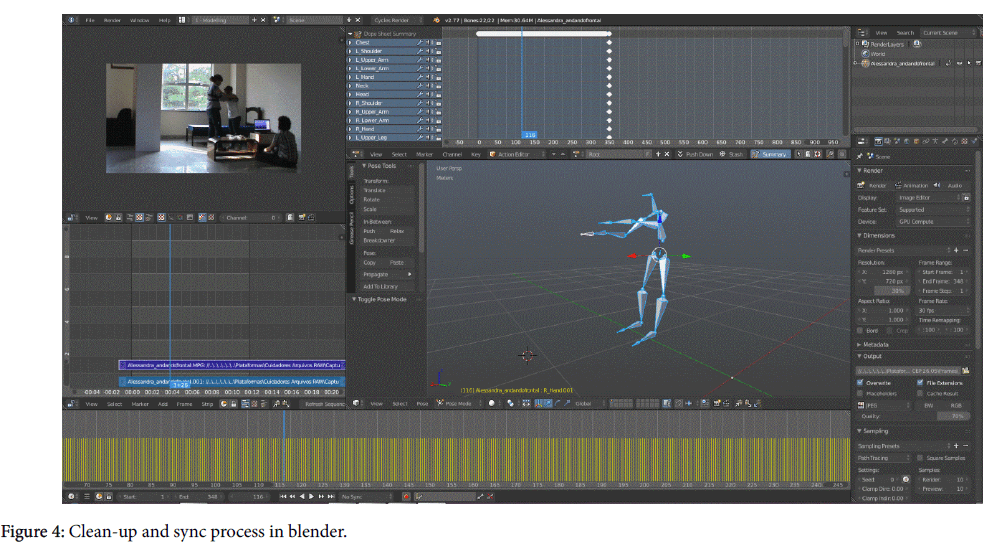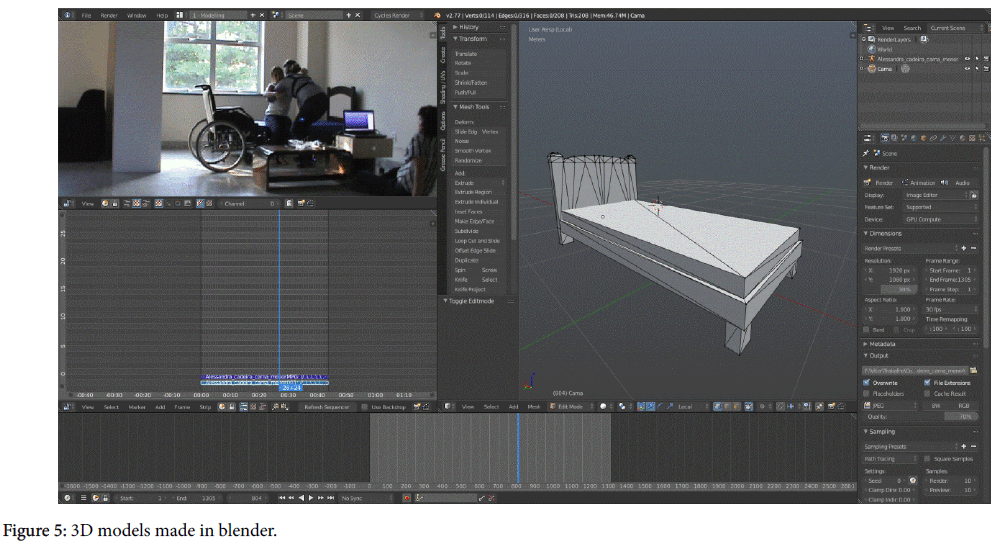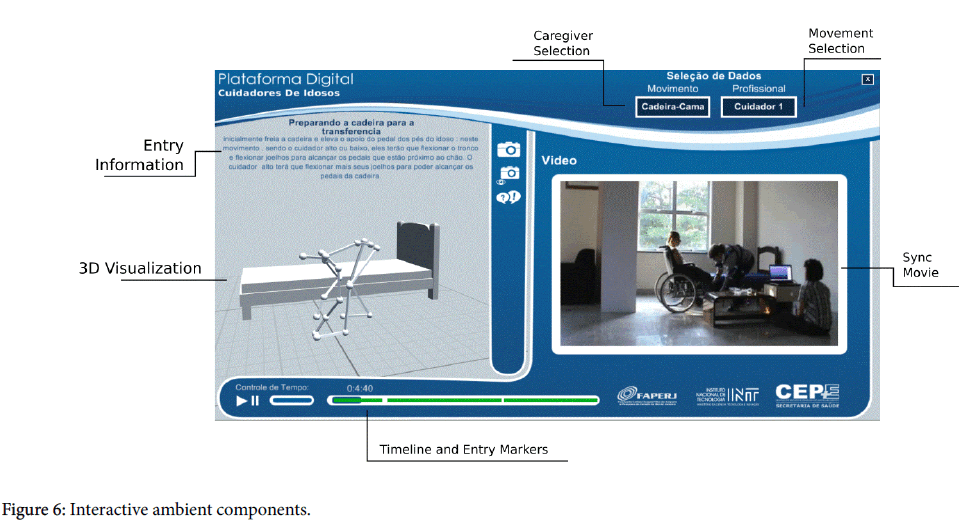Research Article Open Access
Caregivers and Old People Digital Platform for Education and Training
Guimarães CP*, Cid GL, Balbio V and Macedo LPNational Institute of Technology, Industrial Design Division, Av. Venezuela, Brazil
- *Corresponding Author:
- Carla Patricia Guimarães, PhD
National Institute of Technology
Industrial Design Division
Av. Venezuela, 82 anexo 4 Térreo
Rio de Janeiro, RJ, Brazil
Tel: +552121231058
E-mail: carla.guimaraes@int.gov.br
Received date: April 20, 2016; Accepted date: June 06, 2016; Published date: June 15, 2016
Citation: Guimarães CP, Cid GL, Balbio V, Macedo LP (2016) Caregivers and Old People – Digital Platform for Education and Training. J Community Med Health Educ 6:438. doi:10.4172/2161-0711.1000438
Copyright: © 2016 Guimarães CP, et al. This is an open-access article distributed under the terms of the Creative Commons Attribution License, which permits unrestricted use, distribution, and reproduction in any medium, provided the original author and source are credited.
Visit for more related articles at Journal of Community Medicine & Health Education
Abstract
The percentage of people over 60 years increased from 8.6% in 2000 to 10.8% at Brazilian population in 2010. In 78 cities of Brazil this portion of citizens already represents 20% of the total population. These health and social issues have increased concern of government health institutions regarding the care services and products development for this population in order to improve quality life and security. The purpose of this paper is to present a 3D digital interactive environment to improve education and training of caregivers in order to interact with them as a game to improve the daily care services tasks. The 3D interactive platform framework involved: first step-captured caregivers selected motions using 17 inertial sensors from XSENS Technology and Yei Technology inertial sensors; second step-3D modeling and simulation-motion data are incorporated to virtual environment using biomechanical models in a game platform; third step-reports and descriptors. The conclusion are: the digital platform will assure more democratic visualization and improve available information for the stakeholders involved, as caregivers, designers, architects, health personnel's in the benefit of senior population.
Keywords
Caregivers; Old people; Digital platform; Motion capture
Introduction
Average life expectancy has increased worldwide, the people has been longer life and the expectation is to achieve 73 years in 2015. The tendency is similar in all countries but the absolute values greatly differ between the various world regions (Figure 1) [1].
In Brazil the percentage of people over 60 years increased from 8.6% in 2000 to 10.8% in 2010. In 78 cities of Brazil this portion of citizens already represents 20% of the total population.
This aging population has been having a great impact on social and economic structure of the countries. These health and social issues have increased concern of Brazilian government health institutions regarding the care services and products development for elderly population in order to improve quality of life quality and security. With this growing, also increase the incidence of dependence on this social sector and consequently the need for caregivers and providing assistance.
Low back pain is common in the general population, affecting more than 60% of people and often causing appreciable disability. It is particularly common in health care services employees, as nurses and caregivers. The high rate of low back disorders in health care services employees is associated with work activities particularly heavy physical workload and manual material and patients handling, particularly in lifting and moving patients associated with adverse postures [2].
Caregiver training requires the adoption new approaches to care. Understanding the level of caregiver readiness to learn and implement new strategies can improve the approach to training. Caregivers with low levels of readiness may need more education about the disease and an understanding that troublesome behaviors are not intentional but a consequence of the disease. Caregivers with high levels of readiness tend to be immediately receptive to learning and implementing strategies. Interactive virtual environments or serious games may offer solutions to many of these varieties of readiness to learn of the caregivers [3].
Serious games or Interactive virtual environments are digital games with the purpose to improve training, knowledge, skills or attitudes of the people in the real world. Serious games applied to medical or health-related purposes are growing fast in numbers and in types of application [4-6].
The purpose of this paper is to present a 3D digital interactive environment to improve education and training of caregivers in order to interact with them as a game to improve the daily care services tasks.
Materials and Methods
That platform is being developed considering the need to analyze data from different caregivers movements being repeated in different moments (kinematics analysis) and also with different skills. A sample of inexperience caregivers were invited to participate in the study, they were student at a Caregivers Course in CEPE (Centre of elderly study and research). Also were invited to participate in the study of a sample of caregivers instructors of the course. All Caregivers with and without experience and skills that participated of the study signed a consent agreement.
The motion captured session happened at CEPE`s facility. The caregivers motions selection to be captured were based on previous study made by the researchers [3,7]. Two types of Inertial Motion captured were used at the study, Xsens Motion Captured and Yei technology Motion captured. Both have 17 inertial sensors that were attached to the body of caregivers, the data were collected and store at a computer to be analyse by the researcher and be convert in BVH files to be insert at the digital environment.
The motions were simulated in the experiment, one caregiver acted as an old people and the other executed the predefined motion, that were: lifting the old people from the bed, carry and put it in the wheelchair; lifting the old people from the wheelchair and carry and put it on bed, walking with an old people simulating different difficulties, bathing the old people in bed, lifting the old people from the wheelchair and carry it to sofa and vice versa.
Interactive Virtual Environments Development
The Virtual Platform was develop using mostly “game technologies” since they are currently the best available tools for virtual scenes 3D. The core system was based in Unity 3D (www.unity3D.com) with addition of some add-ons such NGUI (http://www.tasharen.com/) and others. The system was split in modules to better organization of the development and it components are presented in Figure 2.
Core system: Is the main framework where all the systems are integrated, it includes menus, 3D visualization, Skeleton Reconstructions and other interfaces.
Entry system: The entry system shows information about the movements in real-time, they are sync in timeline in a way to show relevant information about the presented movement.
Movie system: Sync videos are shown in the interface to present a more familiar kind of information for the Caregivers. Also the movies help to understand better the 3D model movements.
Database: Here we available the anthropometric data collected from both caregivers and aged population.
The interface of the system was planned to be easy to use and understand, an important feature since mostly of the users don’t have fluency in digital applications. In the Figure 3 you can see the main interface.
During the development was implemented a process to insert the all the data in the platform, it follows some tasks (Figure 4).
Prepare the 3D model: The model captured in BVH format is imported in Blender (www.blender.org) and it animation is cleaned up and names are fixed to correct reading in the platform.
Add and sync the movies: The movies are imported and sync with the model animation in Blender as shown in the Figure 3, in the end of this process the Movie and the 3D model are saved/exported (blend for the model and sequence of frames for the movie) and implemented in our platform.
Add the entry information: The entry information is added in the platform and sync in the timeline of the animation.
Our system also implements 3D models that are relevant to the movements such interactive objects and reference objects. They were modeled in Blender and added in the platform as shown in Figure 5.
The Interactive Ambient is the main interface of the system, it contains the 3D visualization, the movie and the entries, you can select the movements and one of the caregivers to study it. Different caregivers present different problems and have different analysis in the entry system, also have different videos do present. All the videos and entry are sync with the 3D capture, that way is easiest to understand the movements presented in the View 3D (Figure 6).
Conclusion
The virtual environment will assure more democratic visualization and improve available information in classroom to training the caregivers, and also have relevant information for others stakeholders involved as designers, architects, others health care personnel's in order to offer quality care services and attend the necessities of old people.
Acknowledgement
This work was funded by CEPE/IVB and FAPERJ.
References
- Harrington H, Harrigton M (2000) Why and How. Herman Bouma Foundation for Gerontechnology. Gerontechnology.
- Smedley J, Egger P, Cooper C, Coggon D (1997) Prospective cohort study of predictors of incident low back pain in nurses. BMJ 314: 1225-1228.
- Guimaraes C, Balbio V, Cid G, Zamberlan M, Pastura F, et al. (2015) 3D Virtual Environment System Applied to Aging Study - Biomechanical and Anthropometric Approach. Procedia Manufacturing 3: 5551-5556.
- Arambarri J, Torre I, López-Coronado M, Álvarez I (2014) Investigating the Potential market of a Serious Game for Training of Alzheimer’s Caregivers in a Northern Spain region. Int J Serious Games 1.
- Buttussi F, Pellis T, CabasVidani A, Pausler D, Carchietti E, et al. (2013) Evaluation of a 3D serious game foradvanced life support retraining. Int J Med Inform 82: 798-809.
- Graafland M, Dankbaar A, Logro J, De Witzuurendonk L, Schuit S, et al. (2014) How to systematically assess serious games applied to Health care. JMIR Serious Games 2.
- Guimarães C,Cid G, Macedo L, Orseli M, Correa S, et al. (2015) Kinematic analysis of Caregivers in activities with the elderly. Mackenzie Presbyterian University, Sao Paulo 15: 1-11.
Relevant Topics
- Addiction
- Adolescence
- Children Care
- Communicable Diseases
- Community Occupational Medicine
- Disorders and Treatments
- Education
- Infections
- Mental Health Education
- Mortality Rate
- Nutrition Education
- Occupational Therapy Education
- Population Health
- Prevalence
- Sexual Violence
- Social & Preventive Medicine
- Women's Healthcare
Recommended Journals
Article Tools
Article Usage
- Total views: 11437
- [From(publication date):
June-2016 - Apr 04, 2025] - Breakdown by view type
- HTML page views : 10512
- PDF downloads : 925






